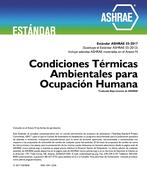Description
Control of indoor air quality has become an issue of increasing concern in recent years. It is generally accepted that aerosols represent an important mode of transmission for many respiratory and non-respiratory viral diseases (104), although this view has not always been as widely accepted as it is today. Virus aerosols can be generated and spread to environments external to the host either directly through coughing or sneezing, or indirectly by aerosolization of previously excreted or secreted body fluids. Droplets generated via the respiratory tract evaporate and become “droplet nuclei” with sizes ranging from 0.5 to 20 pm, the latter occurring when viruses are attached to larger non-viable particles (118). These droplet nuclei aerosols then become dispersed throughout enclosed spaces by room air current movements or by building ventilation systems.
In hospitals, prevention of airborne viral particle spread from human reservoirs to susceptible patients is accomplished through the application of high efficiency filtration, ultraviolet disinfection of viral sources, individual room ventilation, and isolation. In at least one hospital, it has been demonstrated that airborne particle control can be achieved in patient rooms through the use of HEPA filtration at room intakes and higher than normal room air exchange rates (106).
This report reflects the results of a three-month project addressing the problem of airborne spread of viruses in indoor environments and possible means for reducing or eliminating this problem.
Product Details
- Published:
- 1993
- Number of Pages:
- 115
- File Size:
- 1 file , 3.8 MB
- Product Code(s):
- D-RP-776




